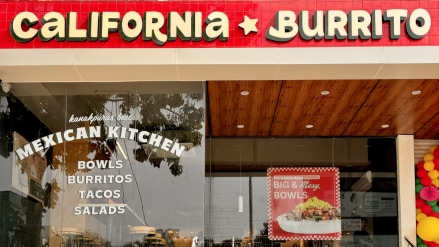When India’s quick service restaurant, QSR, was more or less defined by big pizza and burger franchises, international cuisines were almost absent. That gap was noticed in 2010 by Bert Mueller, then a 20-year-old American student on a semester abroad in Jaipur. He saw the overlap between Indian and Mexican food cultures, including rice, spice and layered flavours, and wondered if burritos could fit into the Indian dining routine.
Two years later, he returned to Bengaluru with a tortilla press and his savings. Along with friends Dharam Khalsa and Gaelan Connell, Mueller co-founded California Burrito in 2012. Today, California Burrito has grown into a 100-store chain, generating as much as Rs 196 crore in revenue as of FY24.
How it began
The founders pooled in their personal savings and raised $250,000 among friends and family to start the company’s first outlet in Bengaluru’s Embassy Gold Links, a prime location for corporate offices. On opening day, the store served over 600 transactions, generating sales of Rs 1.7 lakh.
The early years were marked by operational hurdles — importing tortilla presses, sourcing black beans and training staff unfamiliar with burritos. Customers also needed guidance on how to eat the foil-wrapped product. Despite these challenges, office-goers adopted the format quickly, particularly rice bowls, which became the brand’s first breakout product.
While many advisers pushed for heavy localisation of flavours, the founders kept the menu close to Mexican traditions. The company’s core offerings were rice bowls, tacos, burrito, and salads paired with guacamole and salsa which were made in house. The company also partnered with Karnataka farmers in order to deliver specific quality avocado and tomatillos and to reduce dependency on imports.
Expansion
Rather than opting for franchising, the company chose to own and operate its outlets thereby prioritising control. Early growth was concentrated in tech parks, which provided steady weekday traffic. Post that, the chain found its way to malls and standalone neighbourhood outlets.
From 15 stores in 2016, the company increased the store count to 73 by 2023. The 100th store was established in Bengaluru in former half of 2025. Pandemic posed to be a problem, when the dine in fell through, delivery accounted for 90% of their sales. The company had to resort to selling assets, investor loans were taken and salaries were reduced in order to survive. By 2022, sales were back to usual as offices re-opened and food delivery routines resumed.
Affordability has been at the heart of the model. A Rs 300 burrito bowl, for example, normally generates a store-level margin in excess of 15%, and costs are carefully kept in check on food, labor, rent and utilities. Prices have increased less rapidly than inflation over the last decade, with expansion financed largely through internal accruals as opposed to substantial institutional rounds.
The company now plans to expand three times its size to 300 stores in India, with forays into Tier-2 towns in addition to metros. International markets are also being considered, although growth overseas will be paced slowly.
